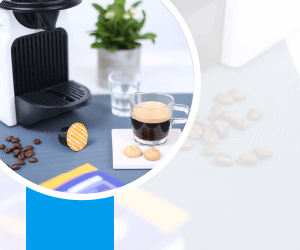How To Use Ground Coffee As Fertilizer?
You have prepared a coffee and usually throw the coffee grounds in the garbage? Stop! There’s a better way you can use it at home.
Coffee grounds, alternatively also known as coffee prunes, are in many cases a wonderful fertilizer for your plants. But can you use it for all flowers or are there restrictions?
Why Is Ground Coffee Suitable As Flower Fertilizer?
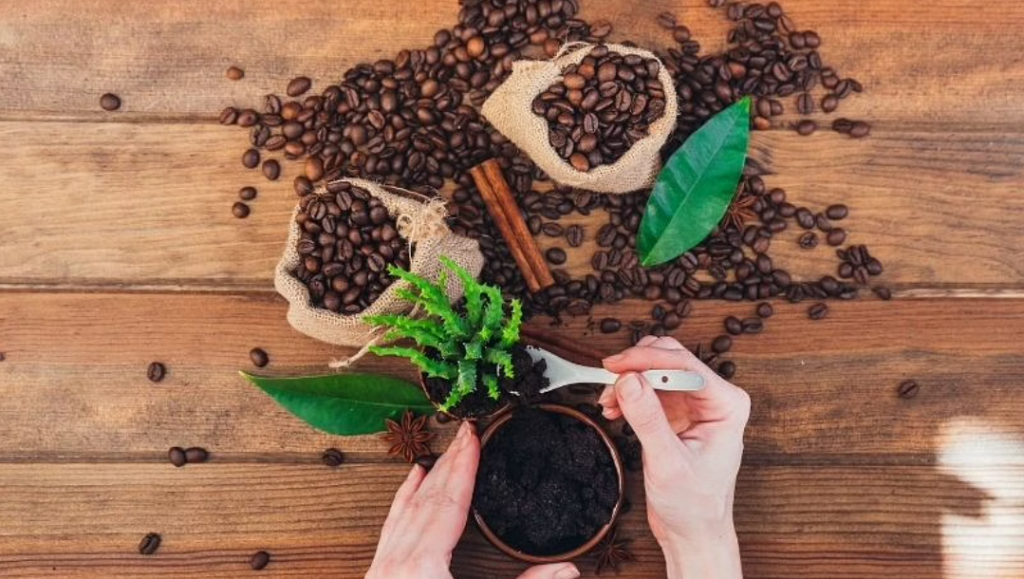
Do your flowers need fertilizer again? Then you should try it with the coffee ground, which you already have at home. It is a purely plant-based starting product that contains a lot of nitrogen, phosphorus, and potassium. Despite the subsequent roasting of the coffee beans, the plant nutrients are largely retained. In addition, roasting produces humic acids, which ensure that the pH value of the coffee grounds is slightly acidic. The majority of all plants also prefer slightly acidic and humus-rich soil, so the coffee grounds are perfect.
The annual production of coffee beans is about 10,200,000 tons. This huge amount is processed in millions of coffee machines worldwide with hot water or steam to make espresso, mocha, or just a simple cup of coffee. Once it has been brewed, the ground coffee has done its job – the moist coffee grounds are disposed of. On the one hand, you don’t have to buy extra fertilizer from specialist shops and you can also recycle existing leftovers.
In addition to its function as a plant fertilizer, coffee grounds also attract earthworms. The animals like the structure and like to lay their cocoons in coffee residues. Earthworms are particularly useful for loosening up the soil. In contrast, pests such as snails, ants, and mosquitoes are combated. We explain more about this a little further down in this article.
Best Coffee Gear Guides

Best Espresso Machines

Best Coffee Makers
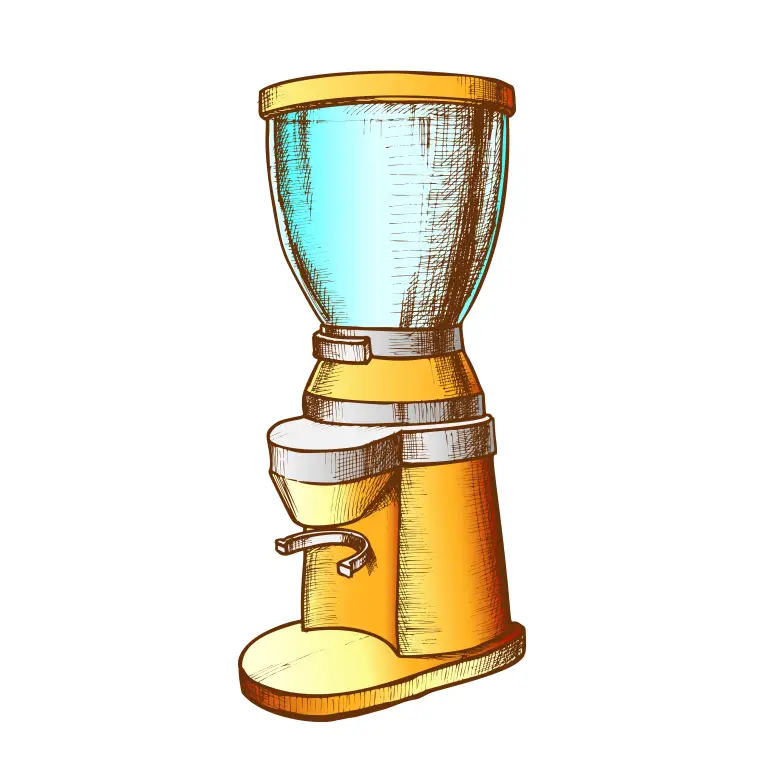
Best Coffee Grinders
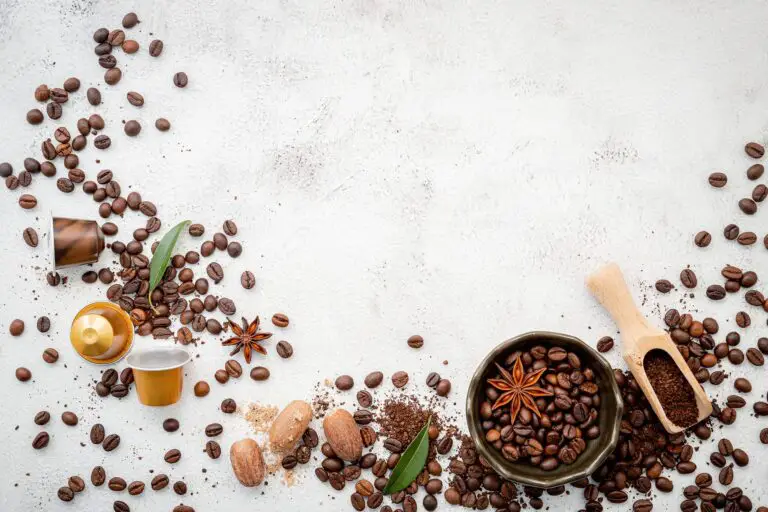
Best Coffee Beans
Processing Of Ground Coffee As Fertilizer
Basically, you should always dry the coffee grounds for a few days. It is best used in powder form. If you don’t dry it enough, mold can develop and you won’t be able to use the leftovers from your morning coffee as fertilizer.
Alternatively, you can compost coffee grounds. It is therefore an indirect fertilizer for your garden plants. Sprinkle the still-wet powder onto your compost heap. However, avoid leaving the coffee grounds in the filter bag to avoid mold.
What nutrients are in coffee grounds?
Dried coffee grounds have the following ingredients:
- 2% nitrogen
- 0.4% phosphorus
- 0.8% potassium.
- Tannic acids
- Antioxidants
- Caffeine
Nitrogen, phosphorus, and potassium are among the “macronutrients” of plant fertilizer. These are also contained in artificial fertilizers, albeit in much higher concentrations. Nitrogen is a key component of chlorophyll. Chlorophyll is the substance that makes the leaves of a plant green. Plants need this element to carry out photosynthesis.
Photosynthesis is the conversion of carbon dioxide into carbon and oxygen under the influence of sunlight. Plants need phosphorus to build cell walls. It stabilizes them and supports their entire growth. Potassium has many functions. Its main task is to bind the water. In this way, the plant can always supply itself with moisture.
In contrast to artificial fertilizers, there is no risk of over-fertilization when fertilizing with dried coffee powder. It is therefore not harmful to the groundwater. Increased growth of algae in nearby bodies of water is also unlikely when using this natural fertilizer. The biggest advantage of this method is that this waste material is available everywhere.
Which Plants Can You Fertilize With Coffee?
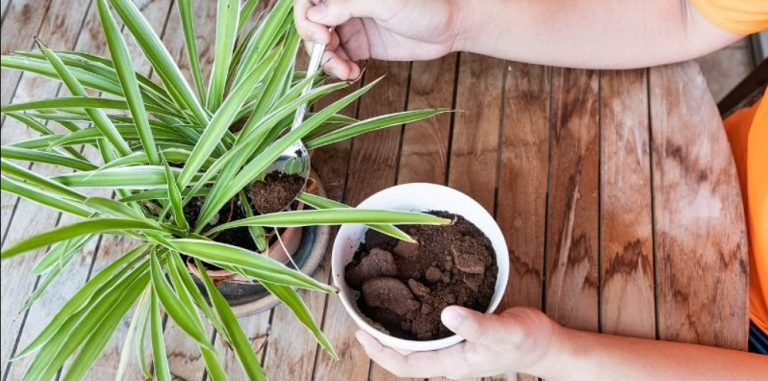
The Following Plants Are Particularly Suitable For Fertilizing With Coffee Grounds:
- Tomatoes
- Cucumbers
- Zucchini
- Pumpkin
- Berry
- Roses
- Hydrangeas
- Rhododendron
- Fern
- Race
Roses
Roses are among the plants that, under certain conditions, enjoy coffee grounds as fertilizer. However, the interval between fertilizing must be at least one month. You should also make sure that the coffee grounds are completely dry. If this is not the case, the roses will unfortunately not respond to the natural fertilizer with growth.
To achieve the best possible result, simply work the product a little below the surface of the soil. Coffee grounds are not normally sufficient as fertilizer because roses have a high nutrient requirement.
Tomatoes
Tomatoes, like roses, have a very high nutrient requirement. However, the coffee grounds alone cannot cover this requirement here either. You need an additional special tomato fertilizer and can then use a combination of both. Experts recommend using coffee grounds for tomatoes no more than once a month.
There are several ways to fertilize tomatoes with coffee grounds:
- You simply spread the dry powder on the ground.
- You mix it in a 1:1 ratio with the water, but avoid touching the leaves when watering.
- You mix it directly with the soil when you re-pot.
Orchids
Ground coffee as flower fertilizers is well suited for orchids, provided they grow in their special substrate. Coffee is not suitable for fertilization in a hydroponic environment. The application, meanwhile, is very simple:
- Spread the coffee grounds on the surface of the earth.
- Alternatively, you can also mix it with some soil.
- Now water your orchids as usual.
Since orchids are known to be very sensitive, you should proceed with caution. Don’t use too many coffee grounds, in the beginning, to avoid damaging your flowers. If the plant takes the fertilizer well, you may want to add more next time.
Hydrangeas
Hydrangeas traditionally flower extensively, so the plant requires a lot of energy. Here you can use excellent coffee grounds to fertilize the garden plant. It is also helpful that hydrangeas prefer slightly acidic soil.
Ground coffee cannot be used as the sole fertilizing option in the case of hydrangeas either. It lacks the necessary nutrients for this. However, it is very suitable as a supplement. For application, you should work it into the soil. On the surface, coffee can have a harmful effect on plants.
Pumpkin
Pumpkin has a particularly high nutrient and water requirement. Here you can fertilize generously with the coffee grounds. The more nutrients the pumpkin gets, the more it thanks to you with magnificent growth.
Cucumbers
You can ideally fertilize cucumbers with coffee grounds if you mix the fertilizer with the mulch. This also protects the soil from drying out.
Zucchini
Use the same process for zucchini. Here you can supplement the mulch with finely chopped banana peels. This increases the potassium content for the plants.
Berry
Berry bushes are also good recyclers of coffee grounds fertilizer during the growth phase. Stop fertilizing with this natural substance, but during the ripening phase of the berries. Otherwise, it can affect the taste of the fruit.
Rhododendrons
Rhododendrons are very sensitive to alkaline limestone soils. You can “defuse” the alkaline soil sufficiently by mixing in coffee grounds. So if you have mainly limestone soil in the garden, you can still use this trick to get your rhododendron splendor.
Ferns
Ferns, for their part, tend to acidify the soil. Nevertheless, you can put coffee grounds in the planting hole when repotting or planting these primeval plants. In addition to the precious nutrients, you have also given the archaic green a valuable water reservoir. And ferns need a lot of that.
The Lawn
Finally, let’s take a look at the most popular green part of many gardens: the lawn. Coffee grounds can also be used as fertilizer here. What is the best way to do this?
- Freshly mow your lawn.
- Make sure your coffee grounds are clump-free in the fertilizer cart.
- Spread it evenly over the lawn.
- You should not use more than 50 grams per square foot.
- Then blast your lawn.
Lawn absorbs the fertilizer from coffee grounds particularly effectively if you sprinkle it with it immediately after mowing. Blow up your lawn immediately afterward, and the nutrients will quickly soak into the soil. This form of lawn fertilization is not recommended very often. The experts advise you to do it a maximum of three or four times a year.
7 Plants You Cannot Fertilize With Ground Coffee
Fertilizer made from ground coffee has many nutrients. But it is not suitable for every soil and all indoor plants. You should therefore not fertilize the following seven plants with used coffee powder:
- Boxwood
- Lavender
- Bluebell
- Crocuses
- Tulips
- Daffodils
The box tree needs alkaline, calcareous soil. It also tolerates hard water very well. As a natural fertilizer for the boxwood, crushed eggshells are suitable instead of coffee grounds.
Lavender is very frugal. He practically does not need fertilizer. A little compost will do. Lavender not only smells wonderful, but it is also particularly attractive to bumblebees.
The bellflower thrives best in neutral to slightly alkaline soil. However, it is sensitive to water which is too hard. This is where the coffee grounds can help neutralize the water. A teaspoon of used coffee powder in 1 liter of water is sufficient. However, you do not need to additionally fertilize the soil around the bellflower.
Crocus does not tolerate acidic soil, which makes coffee grounds unsuitable as fertilizer. For these magnificent early bloomers, compost is best for supporting growth.
Tulips are even more sensitive than the crocus. They prefer wood ash as a natural fertilizer.
Daffodils need practically no fertilizer in the garden. As houseplants, however, they can quickly suffer from a lack of nutrients. Coffee grounds are not optimal because they contain too much nitrogen. Better to fertilize the beautiful flowers with compost if you want to use them as houseplants.
The same goes for cloves. The soil for carnations only needs some liquid fertilizer if they are kept as houseplants. If you use coffee, the soil becomes acidic and the plant dies.
Can You Water Flowers Directly With Coffee?

Wouldn’t it be even easier to brew a cup of coffee and use it to water your plants? In theory, yes, but in practice, this is not the case for everyone. However, you can do something good for some houseplants in this way. This is because coffee grounds do not decompose in the compact soil of the root ball. Accordingly, the result is that he begins to mold.
If you mix the cold coffee (without milk or sugar, of course) with water in a 1:1 ratio, you can use it to water indoor, balcony, and potted plants. However, you should remember not to work here too much and too often. No houseplant should be given more than half a cup of coffee diluted with water per week. If you overdo it, the soil will become too acidic and the plant may die.
Coffee Grounds Against Snails, Vine Weevils & Co.
Not only can you speed up plant growth by adding coffee grounds, but you can also control pests.
Many have a snail problem in the garden, for example. These can be killed by a two percent caffeine content in the coffee grounds. Other scientists contradict the effectiveness of this comparatively low concentration. They analyzed the need for up to 200 grams of coffee powder to produce an anti-slug solution. Ultimately, the easiest way is to simply measure it based on your own needs.
When your plants are infested with vine weevils, you will often find that leaves are missing in the morning. This is especially true for roses and rhododendrons. Unfortunately, coffee grounds alone are not enough to prevent vine weevil. However, it is an option that can be helpful together with professional means. You also have to collect the vine weevils from the leaves in the evening.
Coffee grounds are useful in the fight against unloved ants in the garden bed or flower box. The advantage is that the farm animals are not killed. Rather, the sprinkling of coffee grounds only encourages them to look for a new home.
Fungus gnats are larvae that like to attack indoor plants. They live in pot balls and are therefore usually difficult for us to combat. Your advantage is that the fungus gnats do not like acidic soil. Accordingly, a solution of coffee and water mixed in equal parts helps.
If aphids are to be combated, coffee can also help. Pour the coffee-water mixture in a 1:1 ratio into a normal spray bottle. To prevent jumping over to neighboring plants, you should make sure to cover their substrate with sand, for example.
Conclusion
Coffee grounds are a useful fertilizer that you can use on many plants. The prerequisite is that they are not averse to acidic soil. For indoor plants, you can even mix fresh coffee with water and use the product to water the flowers. However, coffee grounds alone are usually not sufficient as fertilizer. However, it is a good option as an admixture to appropriate fertilizers.
As you can see, used coffee is far too valuable to simply throw away. Especially when it’s not even thrown away with the organic waste, it’s a real shame to waste it. We’ve shown you how to get large quantities of ground coffee for the garden quickly and easily, and the best way to get its nutrients into the soil. With used coffee, the soil becomes a real booster for growth and fruit formation for your crops and houseplants. This is especially true for heavy consumers such as cucurbits. But even berry bushes and the lawn can really bloom again with the residue from the coffee.
If you don’t want to work the ground coffee into the soil immediately, ensure that it is stored in a dry place. In this way, this valuable natural fertilizer is preserved for your plants for many months and cannot become moldy.
However, coffee grounds are not a panacea for your plants. There are some plants that do not tolerate this fertilizer. Hedges and ornamental flowers in particular, which require neutral or alkaline soil, do not handle coffee grounds well. But for these plants and their special requirements, there are fertilizers that are just as good, which you can also obtain free of charge or very cheaply.
Disclosure: We use affiliate links in some of the products that appear on this page. This helps our site cover the costs of the site, Thanks for your support. Read more


